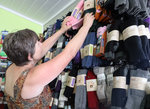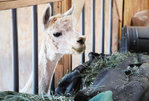



Whether someone is looking to buy a house with acreage or is already the owner of land, it’s important to learn how to properly manage the outdoor area. To help, the Washington State University Extension will be having a class series called “Living on the Land” to educate the public on proper stewardship.
The 12-class series will take place from 6 to 9 p.m. on Wednesdays from Sept. 5 through Nov. 21 in Hazel Dell.
WSU Extension Director Doug Stienbarger invites anyone to join with or without property, he said.
“Ideally we get people who take this class before they get their property because then they have all this information to work with (when) choosing a property,” he said. “Most people that come already have property so they are trying to mitigate how to do the management.”
Living on the Land will cover issues such as how to save money, how to keep water sources clean, how to manage waste, proper grazing techniques, what to do about weeds, and the importance of healthy soil. Small Acreage Program Coordinator Teresa Koper said “it would be very helpful for people who want to make sure they are doing right by their land.”
The program is compiled from generic information that locals were familiar with throughout the west and with added curriculum for how residents can better manage small acreages.
“Then, in 2008, we revised the curriculum and added some business oriented things to make a little bit of money with ones small acreage,” Stienbarger said.
Stienbarger talked about how the program is alwaying learning new things with the help of others.
“We are credible because we are part of the university and when we have questions we can consult with other people and other universities,” Stienbarger said.
WSU works to provide a holistic framework with all the technical information, what land owners have to actually work with physically, and social aspects such as neighboring. It also provides technical information on animals and how to manage them.
“Horses and cows produce 50 to 60 pounds of manure each day,” Stienbarger said in a press release.
“We show how they can compost that, because with even minimal composting you can reduce the volume by 50 percent,” he told The Reflector.
Manure can be composted by simply placing a tarp over a pile to avoid water run off; however, there are other composting options. Another option is to have the manure under a structure with different covered bins to move the waste into. While the bins can tend to be more complicated, Stienbarger said they produce better compost.
With the manure taking up less space, there is less of a chance for it to contaminate water sources such as streams and wells.
“We teach people not to put it near your well, because that could contaminate it,” Stienbarger said.
“It takes all of everyone being on board for us to keep clean water in our community,” Koper added.
During the Living on the Land program, the importance of planting native plants is discussed because they help filter any pollutants from stormwater runoff. Native plants are also climatized to this region, meaning they are used to the amount of water they receive. Many ornamentals that one can purchase come from other parts of the United States or other parts of the world, and so they may require more constant care than native plants.
“You use less water on them, even in our area where at this point we still have access to water, that’s important because it saves water,” Stienbarger said.
Class attendees will also have the opportunity to tour farms with proper water drainage and waste management, giving them a chance to make friends and learn from others.
“The intent is to connect consumers and the general public with people producing agricultural products. We try and diversify the types of farms so that we have people who grow mixed vegetables, meat, or fiber from alpacas,” Stienbarger said.
A common issue people encounter while raising livestock is also covered in the classes — overgrazing. Often livestock will eat grass too short, killing the pasture, and that’s why it’s important to follow the 3-inch rule. Once the grass is 3 inches or below, move the animals to a new pasture of grass that’s 6 to 8 inches long.
When asked what’s most important for people with small acreage to know, Stienbarger let out a laugh before saying, “Honestly, it’s a social thing, which is get along with your neighbors because if someone was going to be unhappy with something you’re doing it’s going to be your neighbor … The hope is that people will use the tools we teach them to help them save money.”